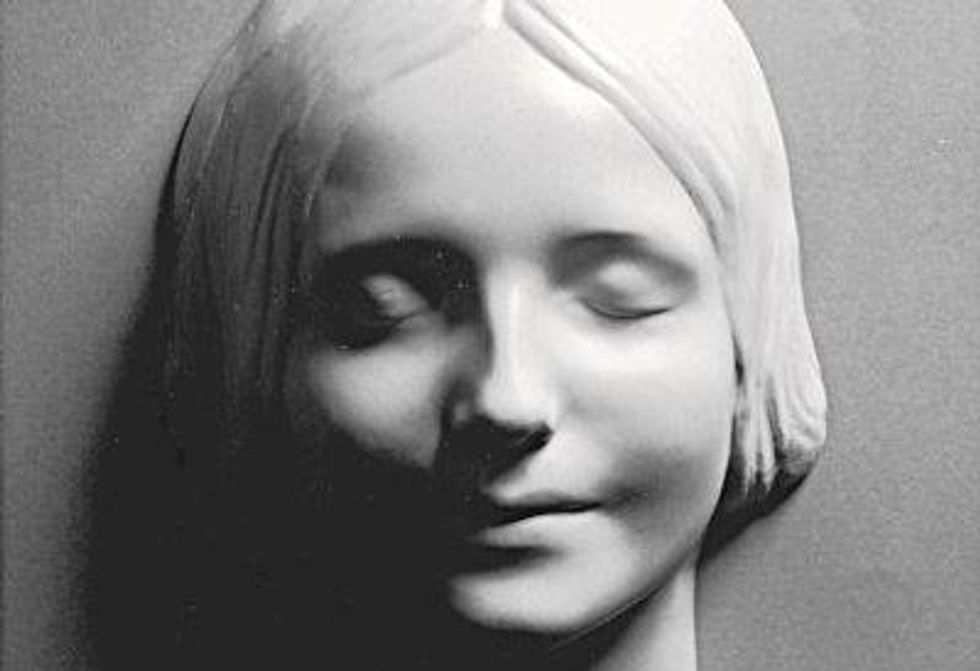A nameless girl whose age, background and circumstances surrounding her death, reputedly from drowning in the River Seine in Paris, remain a mystery.
But her face ultimately left a memorable impression on history when she became known as L'Inconnue de la Seine (the unknown woman of the Seine).
It was in the late 19th century when the girl's body was recovered from the murky river and taken to a Paris mortuary.
Sign up to our free Indy100 weekly newsletter
As there were no marks on her body, it was presumed she may have committed suicide and her age was estimated to be around 16 years old.
Once at the mortuary, the girl was put on public display with other nameless bodies, which was customary at the time to see if anyone would be able to identify her.
However, no one came forward.
During this time, the pathologist at the morgue was so taken by her beauty that he ordered a plaster cast to be made of her face.
In terms of her features, L'Inconnue de la Seine had an enigmatic smile, with her youth apparent due to her full cheeks and smooth skin.
Others soon appreciated the girl's serene appearance as masks of her face were produced and became popular in Paris, and then all over Europe where it became a decorative feature to have in home and art studios.

Philosopher and author Albert Camus described the girl as "drowned Mona Lisa," due to the cultural impact of her youngster's face and even became the source of literary inspiration.
"The Inconnue became the erotic ideal of the period," Critic Al Alvarez said in The Savage God: A Study of Suicide. "I am told that a whole generation of German girls modelled their looks on her."
So how did L'Inconnue become the most kissed girl in the world?
Well, that was down to a Norwegian toy manufacturer named Asmund Laerdal whose two-year-old son, Tore, nearly drowned but he managed to save him by pulling him out of the water and clearing his airways.
Laerdal was then approached by Austrian doctor, Peter Safar and anaesthesiologists who pioneered cardiopulmonary resuscitation (CPR) and asked the toy manufacturer to create a life-size doll to help teach people how to do the life-saving technique.
The mannequin that was named Resusci-Anne had open lips to simulate mouth-to-mouth resuscitation as well as a collapsible chest for compressions.
And when it came to giving the doll facial features, Laerdal decided to use a woman's face as he thought male trainees might be reluctant to kiss a man's face.
He remembered a L'Inconnue mask and believed her face would be perfect to use for the doll.
In 1960, the first version of Resusci-Anne was presented by Laerdal at the First International Symposium on Resuscitation at Stavanger, Norway and the design would continue to be refined.

The invention has since helped hundreds of millions of people learn CPR in the past 60 years and ultimately how to save a life through kneeling down, facing L'Inconnue to learn the technique.
Paediatrician and educator Megan Phelps from the University of Sydney's School of Medicine shared her thoughts with ScienceAlert.
"I don't think we'll ever know who the young woman was," Phelps said. "I suspect she was an artist's model, and her image [was] used to create a mask to be used for drawing copying practice."
And so the mystery behind L'Inconnue de la Seine lives on...
Have your say in our news democracy. Click the upvote icon at the top of the page to help raise this article through the indy100 rankings.














